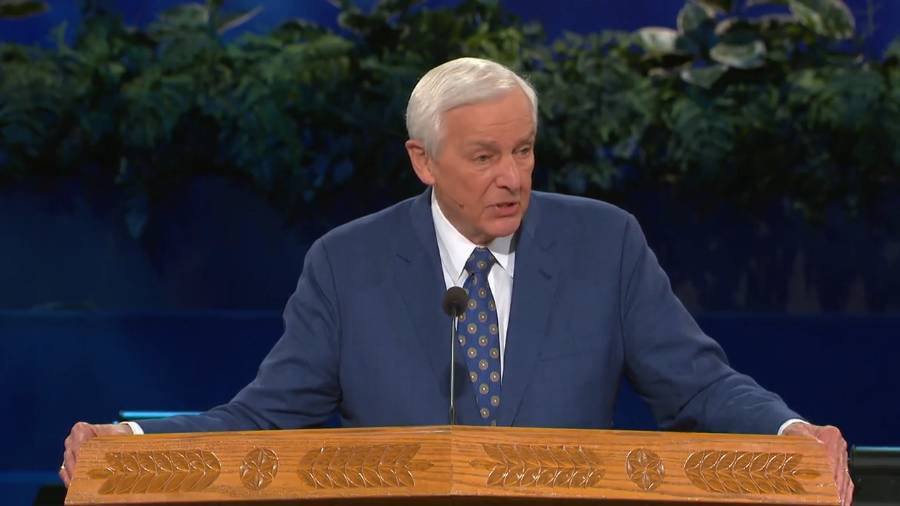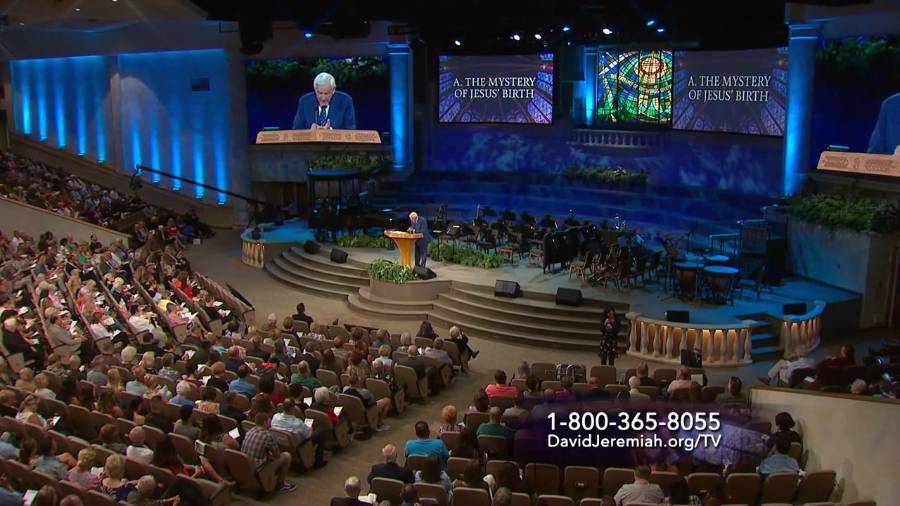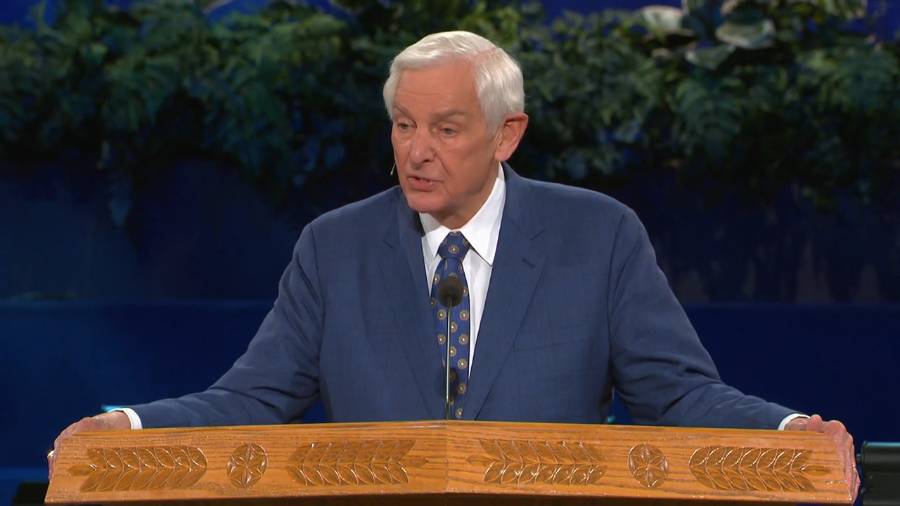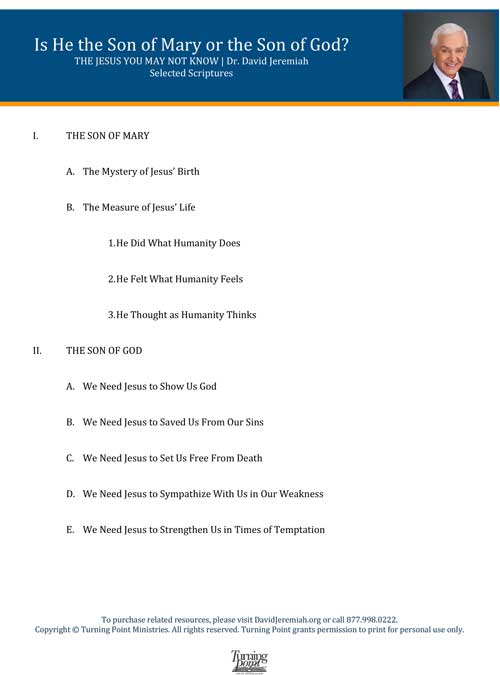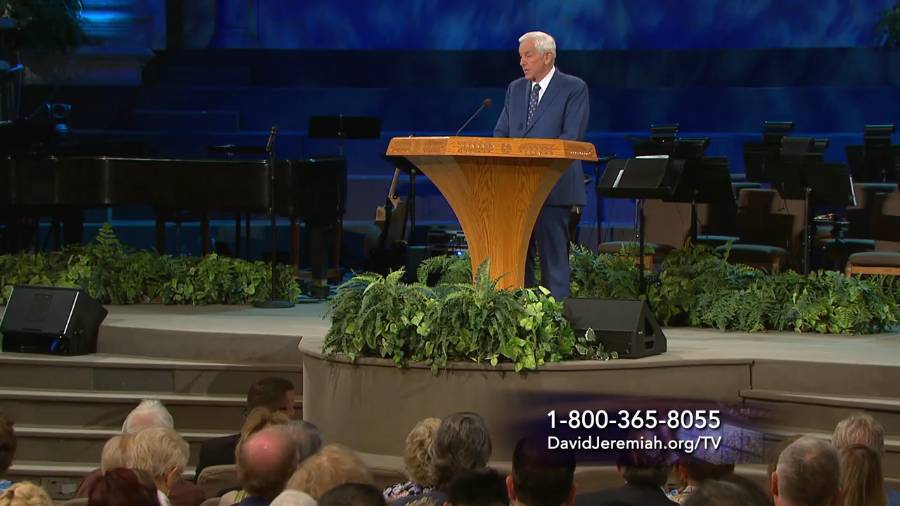The Jesus You May Not Know
Learn toFathomJesus like never before
Resources from David Jeremiah to aid in your journey from knowing about Jesus to knowing Jesus.
Is He the Son of Mary or the Son of God?
Thanks for downloading your free resource!
Thanks for downloading your free resource!
Thanks for downloading your free resource!
Thanks for downloading your free resource!

Jesus on Earth: Son of God, Son of Man
From the Jeremiah Study Bible
By David Jeremiah
Religion—the relationship between God and man—has often been defined as man’s attempt to find God. But Christianity affirms that true faith is the result of God’s successful efforts to reach out to man.
The Old Testament record shows that God took the initiative to establish a relationship with the earthly family He created. In spite of those efforts, there remained a gulf between the two. So at the end of the Old Testament era,
God the Father did something unheard of: He sent the second Person of the Trinity to become a man and dwell among us.
With profound simplicity, the apostle John described the bridging of this gulf as accomplished through Jesus Christ. If we substitute John’s metaphor of the Word for the person he is talking about, we have the following: “In the beginning was Jesus, and Jesus was with God, and Jesus was God…. And Jesus became flesh and dwelt among us” (John 1:1, 14). Paul’s explanation was that “in Him, all the fullness [of God] should dwell” (Colossians 1:19).
It is beyond human understanding how Jesus could be with God, even as He was (is) God, at the same time that He was fully man. We are used to the notion that two objects cannot occupy the same space simultaneously—that we cannot think two different thoughts at the same time or be in two places at once. And yet the Bible teaches that Jesus—an eternal member of the Trinity—took upon Himself human flesh in order to… what? That is the central question:
Why did God come to earth as fully God and fully man?
It is true that He did so to satisfy the Old Testament prophecies (Luke 24:44) and to show us the Father as He really is (Colossians 1:15, 19; John 14:8, 9). But perhaps the most important reasons serve as bookends to Jesus’ experience on earth. Philippians 2:1–11 offers the front end of the answer, while Colossians 1:19, 20 gives us the conclusion.
In Paul’s letter to the church at Philippi, he exhorted the believers to humbly serve one another. In fact, Paul writes, “Let this mind be in you which was also in Christ Jesus” (Philippians 2:5). Do what Jesus did, Paul wrote.
This passage is known as the kenosis passage. Kenosis refers to the Greek word in Philippians 2:7 that explains that Christ “emptied” Himself of His divine prerogatives when He came to earth. He did not temporarily give up His divine nature or “empty” Himself of any of His divine attributes. But He did, in humility, empty Himself of His divine right to glorify Himself as King and Judge. He “made Himself of no reputation, taking the form of a bondservant, and [came] in the likeness of men. And being found in appearance as a man, He humbled Himself and became obedient to the point of death, even the death of the cross” (Philippians 2:7, 8).
Paul explains theologically what Jesus stated practically: “For even the Son of Man did not come to be served, but to serve, and to give His life a ransom for many” (Mark 10:45).
The second part of the answer, in Colossians 1, says that Jesus’ servanthood culminated in reconciling “all things to Himself, …through the blood of His cross” (1:20). In other words,
Jesus bridged the ultimate gap between eternal death and eternal life with His sacrifice and subsequent resurrection.
It was the only way He could present His people as “holy, and blameless, and above reproach” in the Father’s sight (1:22).
The disciple Thomas exemplified our struggle to reconcile God and Man as one. He agreed with the rhetorical question asked by the disciples when Jesus stilled the storm on the Sea of Galilee: “What kind of man is this?” (Matthew 8:27, NIV, italics added). Yet he eventually called that same man, “’My Lord and my God!’” (John 20:28, italics added). God and Man. Servant and Savior. Two complete natures exist without confusion, without change, without division, without separation, in one Person. This is the Jesus of the Bible. Jesus alone cannot be called either–or; He must be called both: Son of God and Son of Man.
For Further Reading: Colossians 2:9; Matthew 4:1; Mark 15:39; Luke 2:52; 24:39; John 1:1–18; 17
This article is an excerpt from The Jeremiah Study Bible.
All rights reserved. No portion of this material may be reproduced, stored in a retrieval system, or transmitted in any form or by any means, except for brief quotations in critical reviews or articles, without the prior written permission of Worthy Publishing.











